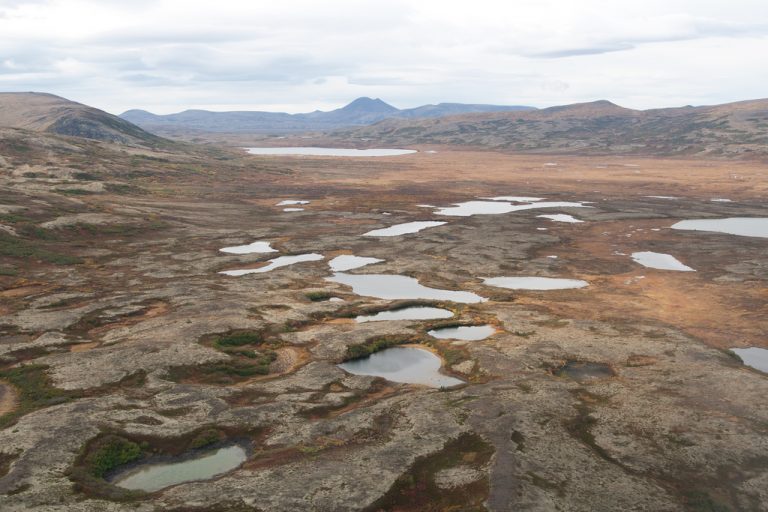An Alaska Native village corporation drove the effort to conserve 44,000 acres of land in the Bristol Bay region, home to the world’s largest salmon fishery.
By Julia Conley Published 12-22-2022 by Common Dreams

The proposed site for Pebble Mine Photo: Jason Sear/KDLG
In partnership with a national conservation group, an Alaska Native village corporation owned by people of Dena’ina descent announced Thursday that it’s secured protections for 44,000 acres of land and waters that have been targeted by developers of the proposed Pebble Mine—creating the latest roadblock for a project that tribal leaders and conservationists warn would threaten the world’s largest wild salmon fishery.
The Conservation Fund, a nonprofit, announced that following an 18-month fundraising campaign, it has purchased three conservation easements for the land near Bristol Bay, surrounding Knutson Creek, Iliamna River, and Pile River. The easements cover part of the land on which developers have sought to build a mining road to transport ore from the proposed copper and gold mine.
The $20 million fundraising effort was kicked off after 90% of shareholders of the locally-owned Pedro Bay Corporation voted last year to allow the Conservation Fund to help stop the development by purchasing the easements. Half of the funding came from the charitable fund Wyss Foundation, the Alaska Venture Fund, and the Holdfast Collective.
HUGE news! Over 44,000 acres in #Alaska’s Bristol Bay region, home to the largest wild salmon fishery in the world, are now permanently protected: https://t.co/qWGPmhzzSu.
— The Conservation Fund (@ConservationFnd) December 22, 2022
The new protections will also cover parts of the Iliamna Lake watershed, which serves as a spawning and rearing habitat for sockeye salmon. The Bristol Bay fishery contained 79 million fish in 2022, making it the largest fishery run on record. Opponents of Pebble Mine said in a letter to the Environmental Protection Agency (EPA) earlier this year that the fishery supports 15,000 jobs and generates $2.2 billion annually, as well as “sustaining Indigenous communities since time immemorial.”
“We are honored to work with the people of Pedro Bay to help them realize their vision of sustainable guardianship, economic stability, and subsistence use,” said Larry Selzer, president and CEO of The Conservation Fund, in a statement. “These locally-driven conservation easements build upon more than 300,000 acres of critical salmon and wildlife habitat in Alaska that The Conservation Fund has protected with Alaska Native village corporations, and are a powerful and durable step toward advancing a broader strategy to establish equitable and lasting protections for the Bristol Bay region.”
The Pedro Bay Corporation will retain ownership of the 44,000 acres covered by the easements while the Bristol Bay Heritage Land Trust (BBHLT)—the local land trust organized by tribal leaders, another Alaska Native village, and the fishing industry—will hold the conservation easements.
Tim Troll, executive director of the BBHLT, said that restraining landowners and developers from damaging activities like mining “will ultimately determine the future of Bristol Bay salmon.”
“The survival of wild salmon in Bristol Bay and our thriving commercial, recreational, and subsistence fisheries all depend upon intact salmon habitat,” said Troll. “By virtue of the conservation easements just executed between the Alaska Native shareholders of Pedro Bay Corporation and the Bristol Bay Heritage Land Trust, we have entered into a binding partnership to preserve forever over 44,000 critical acres in the most productive wild salmon nursery in the world.”
Troll also expressed hope to The Washington Post that the conservation effort sends “a message that the local people who live here do not want this [mine] and… encourages the EPA to follow through with what they’ve been trying to do for well over a decade.”
The news from The Conservation Fund comes three weeks after the EPA’s regional administrator for the area, Casey Sixkiller, recommended to the agency that it should prohibit the use of certain waters as disposal sites by developments like the Pebble Mine.
The EPA is expected to make a decision regarding whether it will allow the Pebble Mine project to proceed by January 30.
This work is licensed under Creative Commons (CC BY-NC-ND 3.0)

